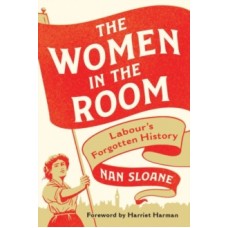In February 1900 a group of men representing trade unionists,
socialists, Fabians and Marxists gathered in London to make another
attempt at establishing an organisation capable of getting
working-class men elected to Parliament. The body they set up was the
Labour Representation Committee; six years later when 29 of its
candidates were elected to the House of Commons, it changed its name
to the Labour Party. No women took part in that first meeting, but
several watched from the public gallery.
Amongst them was
Isabella Ford, an active socialist and trade unionist who would have
been familiar to most of the men assembled below. She had been asked
by her friend, Millicent Fawcett, to attend and report back on what
happened. A few years later she would become the first woman to speak
at a Labour Party conference, moving a resolution on votes for women
but, at the Party's inception in 1900, she and every other woman in
the hall was silent.
Throughout Labour's history, even in its
earliest years, women were present in the room, but they were not
always recorded or remembered. They came from many different
backgrounds and they worked for the causes they believed in as
organisers, campaigners, negotiators, polemicists, public speakers and
leaders. They took on the vested interests of their time; sometimes
they won.
Yet the vast majority of them have been forgotten by
the Labour movement that they helped to found. Even Margaret
Bondfield, who became Britain's first woman cabinet minister, often
barely merits a footnote. Women made real and substantial
contributions to Labour's earliest years and had a significant impact on
the Party's ability to attract and maintain women's votes after World
War I.
In addition to Margaret and Isabella, in many of the
rooms in which the Labour Party found its feet, remarkable women wait
to be rediscovered. This book tells their story.
The Women in the Room : Labour's Forgotten History - Nan Sloane
- Product Code:New
- Availability:In Stock
-
£10.99

